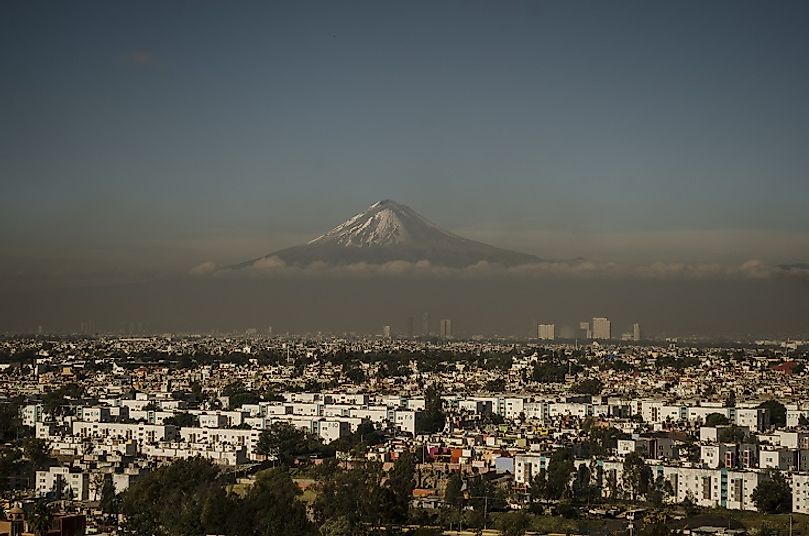Where Does The Mountain Pico De Orizaba Rise?

5. Description
Orizaba (a.k.a. Citlaltepetl), the highest mountain in Mexico, rises to 18,491 feet in the Cordillera Neovolcanica Range. Orizaba is a dormant volcano that last erupted in the 19th Century. It lies between Puebla and Veracruz, and was named for Orizaba, the town and valley that it overlooks. The native Mexicans had through the ages given it many different names in appreciation of its many different characteristics. Some native tribes called it "White Mountain" and "Star Mountain" in their native languages. The Orizaba is just as popular as Kilimanjaro is in Africa. As such, it has become a favorite destination for climbers from around the world. The best time to climb and visit is from October through March.
4. Historical Role
According to Olmec legend, an eagle spirit created this volcano. The spirit eagle then informed the Olmecs that only continuous prayer atop the summit would save them from the fury of the volcano. Hernan Cortes, the Spanish explorer, not knowing the area, chose tp [ass trough the volcano's foothills on his way to Tenochtitlan. This mistake cost him several days of delay. Several road projects were built in the area in the 1600s to connect Orizaba city and Fortin de las Flores. The area was also witness to the struggle for Mexican Independence. It was not until 1848 that the first successful ascent of the volcano was made, an effort carried out by two U.S. Army men, respectively named F. Maynard and William Raynolds.
3. Modern Significance
In 1936, Mexican President Lazaro Cardenas created a national park around the volcano. It includes the volcano and several adjacent settlements. Today, the area is very popular for mountaineers from around the world, and many tourists also come just to enjoy the surrounding beauty. The city of Puebla offers sightseeing, shopping, dining, and lodging. There are many activities to spend your leisure time there, such as engaging in rock climbing, horseback riding, trekking, and mountain biking. The volcano, however, offers tourists an even more exciting brand of activity. Mexico's biggest glacier is found in the mountain, and it is called Gran Glaciar Norte. Other, smaller glaciers are also found in the area. From the town of Tlachichuca, the volcano presents its most attractive feature, seen as a formidable white cone rising to meet the sky.
2. Habitat
On the lower slopes of Mount Pico De Orizaba, tropical temperatures prevail, creating and sustaining a tropical forest habitat that is home to tree ferns, hornbeams, orchids, philodendrons, tropical hardwoods, and lianas, as well as many animal species. The area has pastures for grazing, and woodlands that are often cleared by local woodcutters. Going further up the slopes of Orizaba, a temperate forest of pine, oak, beech, and sweetgum looms, wherein the flora and fauna at their feet are those who have acclimated to the cold climes in which they live. The pine branches there are covered with lichens, bromeliads, orchids, mosses, cacti, ferns, and aroids. Above this level is the cold, treeless, scree habitat, while the top level there is characterized by Orizaba's snow-capped peak.
1. Threats and Disputes
Orizaba has some ongoing conservation issues, and these range from farmers' rights to the use of the land to water pollution caused by livestock. Today, water pollution monitoring is being led by a local non-governmental organization, while Global Water Watch is also involved in this project, which spans its surveillance activities from Orizaba to Veracruz. Deforestation is another perennial problem that occurs due to loggers clearing of the land. The construction of several small dams that will power the hydroelectric power industry is another threat to the environment. Tourist impact is a complex issue in and of itself, such as the fact that economically important water rafting activities would be affected by the damming of several rivers. The goal of one notable project in the area around Orizaba, which is being spearheaded by Conservation International, is to build relationships between the grassroots level and the state to facilitate freshwater modeling, and in turn make a difference in helping the local people and environment alike.







